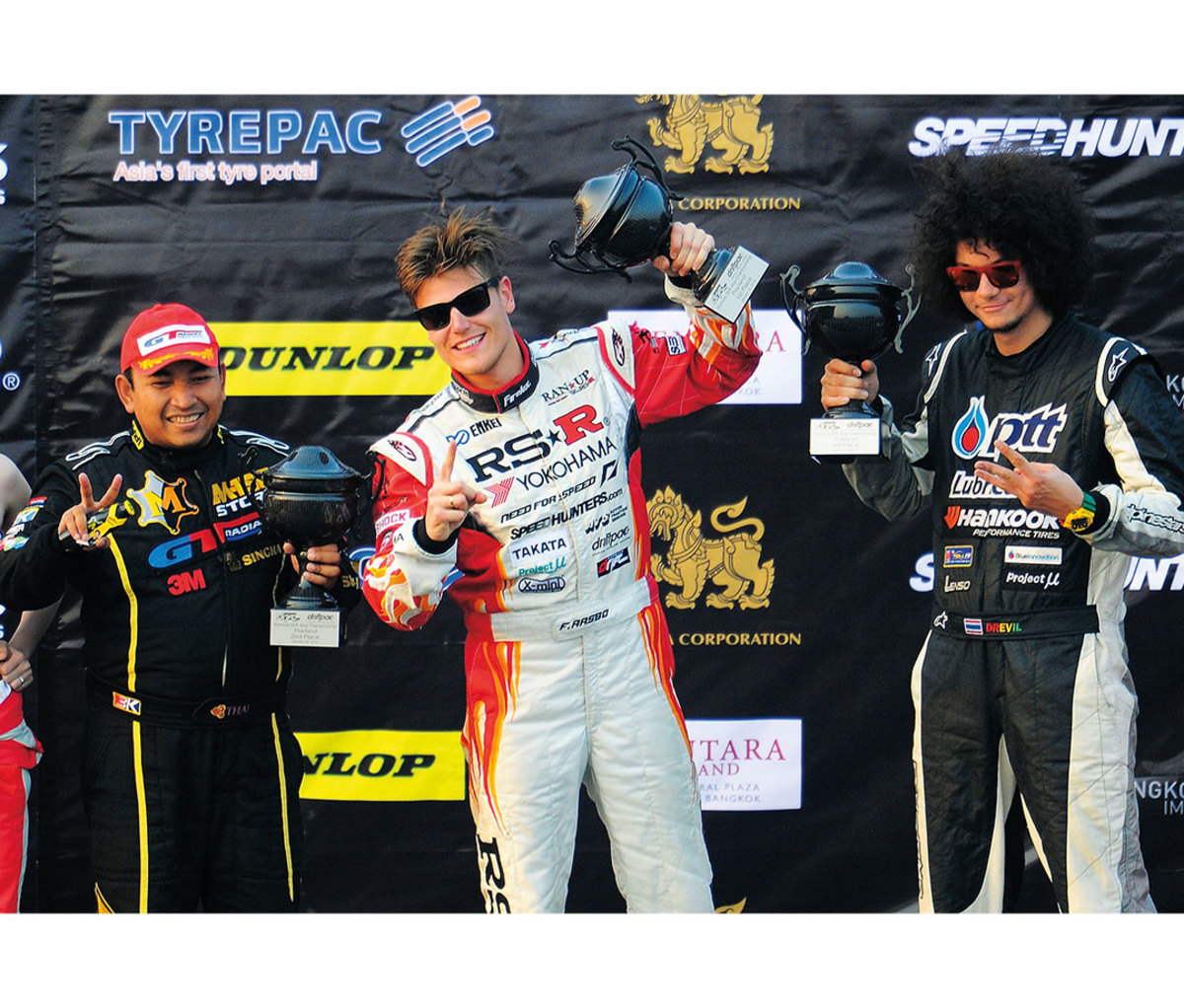Fast cars, smoking tires and ear-shattering noise. These are the nuts and bolts of Formula Drift.
Unlike most motorsports, Formula Drift isn’t an actual race. Drivers tango in tandem, competing with their dance partners to drift longer and deeper into corners—and are then judged on the skill they demonstrate.
That’s not to say drift cars are slow. After all, what would a motorsport be without speed? The spectacle is predicated on a certain amount of velocity in order to produce the billowing plumes that pour from the wheel wells.
This year’s Pro series was contested over nine events around the country and streamed live for viewers at home. Akin to competitive surfing, skateboarding or snowboarding, it’s a visually inspiring format that mates perfectly with social media—Formula Drift’s official accounts have millions of followers. And while the series (launched in 2003) predates both Facebook and Instagram, Formula Drift has lately become one of the hottest motorsports in the world. Its appeal is easy to understand.
“It’s the art of trying to control a car that’s out of control—and I think there’s something ultimately very sexy and exciting about that,” says Norwegian driver Fredric Aasbø, who leads the points for the Formula Drift championship going into the final event.
Attend any event and it’s quickly apparent why drifting is so enthralling. The volume from the 1,000-horsepower motors is bone-shaking and the whole experience is visceral.

“You’re not watching it from far away. These things are in your face,” says Nick Gregson of Compton-based Antigravity Batteries. “You’re smelling all that burnt rubber and race gas. It just gets your adrenaline going.”
The fans are not only treated to the spectacle of the duels, but can also get up close and personal with the gladiators and their chariots. Any attendee can walk right though the pits, and most Drift drivers are surprisingly accessible—willing to give autographs or snap a photo. Pit crews are also happy to chat about their work and will occasionally even invite a fan to sit behind the wheel of one of the racers.
Unlike other series, a large number of Drift aficionados are serious enthusiasts with their own whips they take to the track. It’s a scene embraced by the tuner community, where you’re likely to pass fans in “Tuna, No Crust” T-shirts (a reference to The Fast and the Furious) and backpacks with straps made from racing harnesses. Along with typical merchandise like T-shirts and stickers, vendors also offer engine parts and mod kits.
“We’re really into drifting,” says Nick Martinez, who recently blew up his BMW 4 Series F32 on the freeway. Martinez was attending a qualifying session for the Autozone Streets of Long Beach with his friend and aspiring drift racer Jehad Asad, who rips laps in a 1992 Nissan 240SX. “I’m not trying to get us in trouble, but we really do like it—on and off professional tracks,” Martinez said. The pair, as do many others, comes to the track to feel the energy and thrill of the scene. “You never know what’s going to happen. It takes a lot of skill and attention to do what you gotta do here. That’s what I respect the most about it—it just takes some balls to do what they’re doing.”
The action draws more casual observers too. “I get the point of doing laps in traditional racing. It’s all for speed,” says Buffalo (just one name) from Orange County. “But for someone like me who knows dick about cars, this is way more interesting to watch.”
It’s easy to see why that’s true for both aspiring drifters and plain old racing fans drawn to something completely different. “We’d all love to be badasses behind the steering wheel,” says Aasbø. “Ask anyone.”
from Men's Journal https://ift.tt/32ulNKm


No comments:
Post a Comment